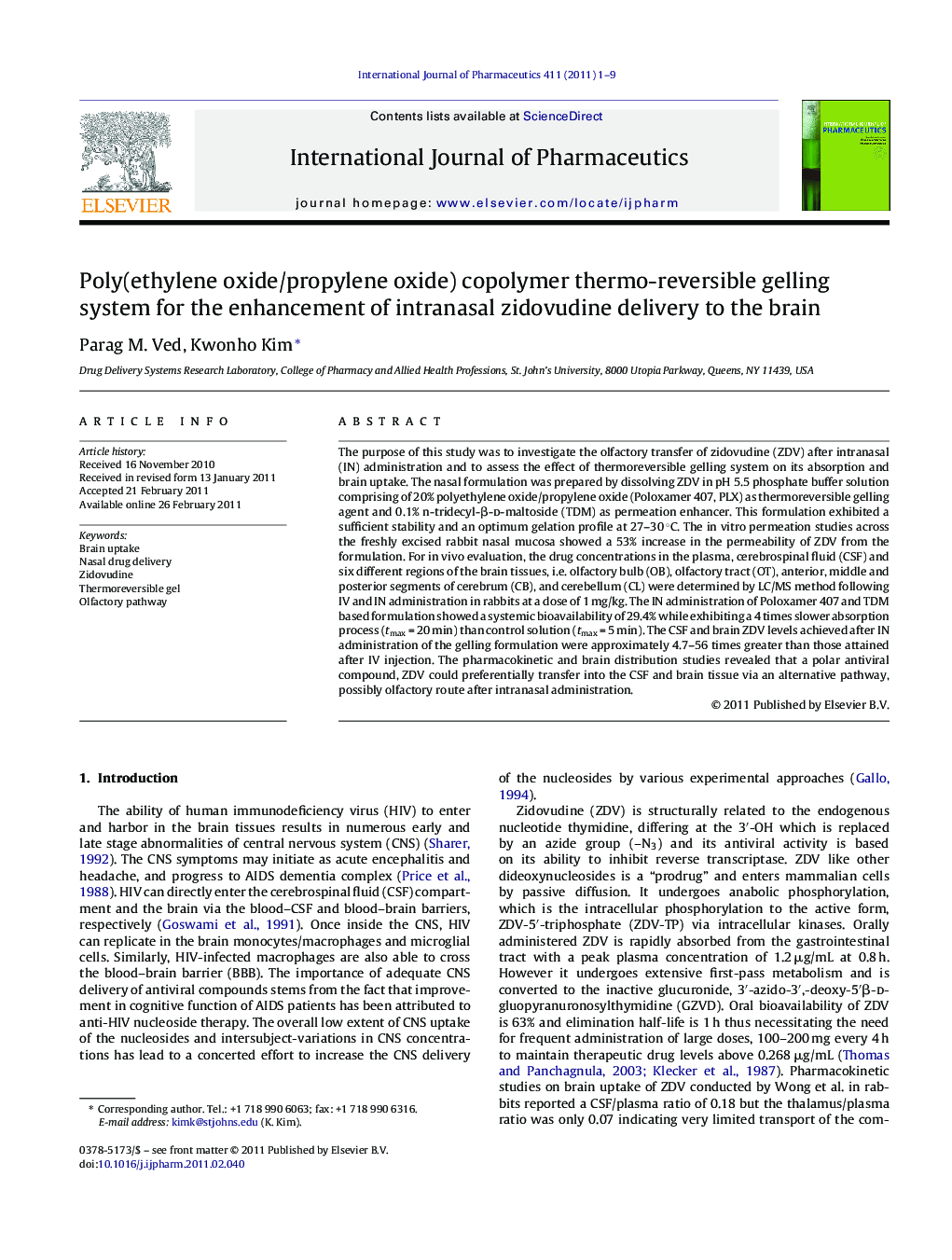| Article ID | Journal | Published Year | Pages | File Type |
|---|---|---|---|---|
| 2503553 | International Journal of Pharmaceutics | 2011 | 9 Pages |
The purpose of this study was to investigate the olfactory transfer of zidovudine (ZDV) after intranasal (IN) administration and to assess the effect of thermoreversible gelling system on its absorption and brain uptake. The nasal formulation was prepared by dissolving ZDV in pH 5.5 phosphate buffer solution comprising of 20% polyethylene oxide/propylene oxide (Poloxamer 407, PLX) as thermoreversible gelling agent and 0.1% n-tridecyl-β-d-maltoside (TDM) as permeation enhancer. This formulation exhibited a sufficient stability and an optimum gelation profile at 27–30 °C. The in vitro permeation studies across the freshly excised rabbit nasal mucosa showed a 53% increase in the permeability of ZDV from the formulation. For in vivo evaluation, the drug concentrations in the plasma, cerebrospinal fluid (CSF) and six different regions of the brain tissues, i.e. olfactory bulb (OB), olfactory tract (OT), anterior, middle and posterior segments of cerebrum (CB), and cerebellum (CL) were determined by LC/MS method following IV and IN administration in rabbits at a dose of 1 mg/kg. The IN administration of Poloxamer 407 and TDM based formulation showed a systemic bioavailability of 29.4% while exhibiting a 4 times slower absorption process (tmax = 20 min) than control solution (tmax = 5 min). The CSF and brain ZDV levels achieved after IN administration of the gelling formulation were approximately 4.7–56 times greater than those attained after IV injection. The pharmacokinetic and brain distribution studies revealed that a polar antiviral compound, ZDV could preferentially transfer into the CSF and brain tissue via an alternative pathway, possibly olfactory route after intranasal administration.
Graphical abstractFigure optionsDownload full-size imageDownload as PowerPoint slide
